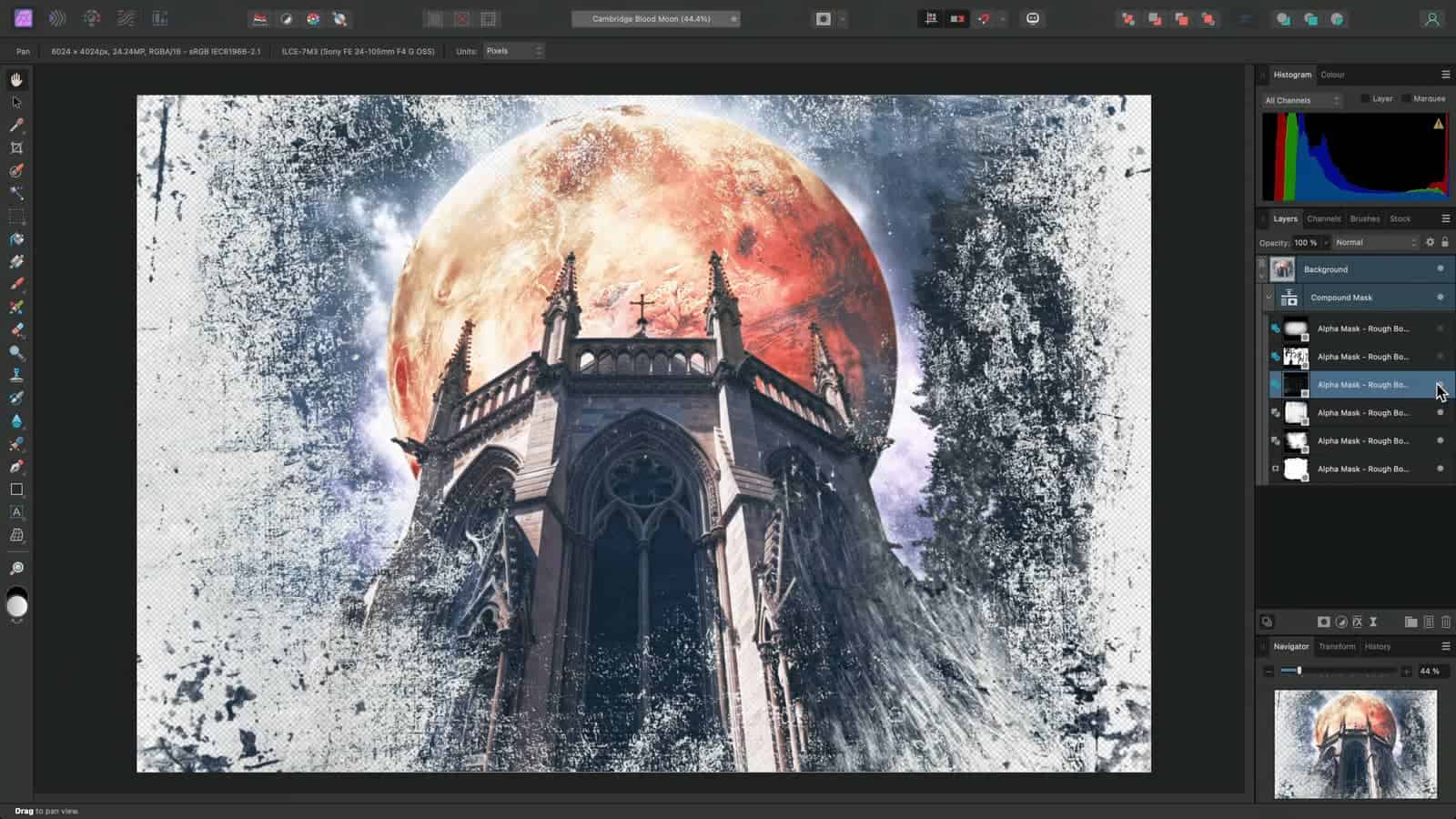Selecting the best laptop for Affinity Photo 2 requires a blend of power, portability, and practicality. This powerful photo editing software demands a capable device to handle its sophisticated features, such as non-destructive editing, RAW processing, and real-time effects. As an avid user of Affinity Photo 2 and a laptop enthusiast, I understand the importance of finding a laptop that strikes the perfect balance between performance and usability.
When searching for the best laptop for this purpose, it's crucial to consider the unique needs of Affinity Photo users. Key factors include a high-quality display with accurate color reproduction, a powerful processor and dedicated graphics card for smooth performance, and sufficient RAM and storage to handle large files and multitasking. To identify the top contenders, I've meticulously reviewed an extensive laptop spreadsheet of recent releases, comparing specs, and considering both professional and user-generated reviews.
As you embark on your quest to find the best laptop for Affinity Photo 2, bear in mind the specific requirements of working with this advanced software, such as compatibility with popular graphic tablets, support for various file formats, and the ability to work efficiently with multiple layers and adjustments. By focusing on these niche-specific details and prioritizing the essential features, you'll be well on your way to selecting the ideal device for your photo editing needs.
Powering up: Choosing the best processor for Affinity Photo 2
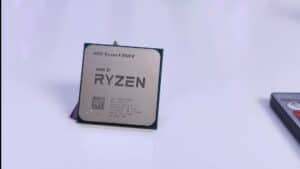
When it comes to photo editing, choosing the right laptop processor is crucial. In this section, we'll look at the options available and provide recommendations for Affinity Photo 2.
MacBook Pro options and how they compare to Windows laptops
Apple's M1, M2, M2 Pro, and M2 Max system-on-chip modules offer exceptional single-core performance and battery life. Macs are a popular option for artists due to their excellent display quality and battery life. However, Windows laptops are also a viable option if you're not sold on macOS. Windows laptops offer a wider range of options and price points, making them a more flexible choice for budget-conscious users.
How does the CPU affect Affinity Photo performance?
The CPU is one of the most important components in a laptop for photo editing, especially if you're working with RAW files. However, it's not the only component – the GPU plays an equally important role, especially if you're working with 4K footage or want to do some gaming on the side.
Does it make sense to get a fast processor for photo editing?
Yes, a fast processor is essential for photo editing, especially if you're working with large files or multiple layers. However, keep in mind that even the best laptop processors struggle to keep up with their desktop counterparts when it comes to raw performance. Instead, we need to look at other metrics such as power efficiency and thermal design power (TDP).
How I rank laptop processors by performance (single-core vs multi-core)
When choosing a processor, I look at its performance in single-core and multi-core benchmarks. In my laptop recommendations, I use Cinebench R23 and PassMark scores as they're good proxies for overall performance. However, if you're looking for a more affordable laptop, don't expect it to be as fast as one with an H-series processor. These are more power-efficient but have lower clock speeds.
Table of recommended processors, organized by price bracket
| Price Bracket | Processor Recommendation |
|---|---|
| Minimum | Intel Core i3-1115G4 |
| Recommended | Intel Core i5-1135G7 |
| High-End | Intel Core i7-11370H |
If you're considering buying a new laptop for Affinity Photo, make sure it has enough RAM (16 GB+), SSD storage (at least 1 TB), and a high-end graphics card (GTX 1650 or higher). With these specifications, you should be able to handle photo editing with ease.
Boost your Affinity with the right graphics card
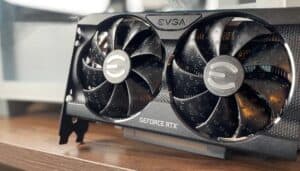
As the GPU market continues to evolve, it's essential to know how to select the right graphics card for your needs. If you're in the market for a laptop, you may be wondering if a dedicated graphics card is necessary for photo editing with Affinity Photo 2. Here are some things to consider:
What has changed in the graphics market?
Nvidia continues to dominate the laptop GPU market. The first round of Nvidia's recently released RTX 40 series cards is hitting the shelves, but the RTX 30 series cards still comprise the lion's share of the current notebook GPU market. Additionally, desktop GPUs are now more power-hungry than before, leading to a wider gap between power-limited notebook graphics and desktop graphics cards.
Why not a gaming GPU for photo editing?
Gaming GPUs are designed to prioritize high frame rates over color accuracy and detail, making them not ideal for photo editing. In contrast, GPUs optimized for creative workloads such as the Nvidia Studio series provide better support for color accuracy and work better with creative applications.
Is a dedicated GPU necessary for photo editing?
While Affinity Photo 2 can run without a dedicated GPU, a dedicated GPU helps speed up the rendering process and overall performance. A dedicated GPU is especially necessary for more demanding tasks like working with high-resolution files or using advanced features like live filters.
How to know if a graphics card is fast (through benchmarks)
3DMark is one of the most popular benchmarks and is easy to find online. Notebook reviews that include 3DMark scores (or similar tests) are a good place to start when looking for a laptop with a dedicated graphics card.
Table of recommended GPUs for various budgets
Here are our recommendations for GPUs suitable for Affinity Photo 2 laptops at different budgets:
| GPU | Recommended Budget Range | Average Laptop Price (USD) |
|---|---|---|
| GeForce GTX 1650 | $600-$800 | $750 |
| GeForce RTX 3050 | $800-$1,200 | $1,000 |
| GeForce RTX 2060 | $1,200 and up | $1,500 |
Keep in mind that these are just recommendations, and other GPUs may work just as well. Additionally, when considering a laptop, make sure it has enough power delivery (PD) wattage allocated to the GPU (150W+) to ensure maximum performance.
RAM Up Your Affinity Photo Experience
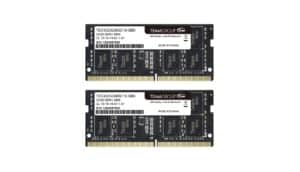
When it comes to photo editing with Affinity Photo 2, having enough RAM is crucial. Adobe applications are notorious for their high memory requirements, especially when working with large files. So, if you're working with RAW files, you'll need a lot of RAM.
The latest-gen Intel and AMD CPUs support DDR4 and DDR5, but DDR5 is still quite expensive and needs time to mature as a technology. RAM speed and quantity are closely linked. If you're looking for a laptop that can handle a lot of RAM, you'll need DDR5 memory, as it's the only option available right now.
But how much memory do you need for photo editing? For Affinity Photo 2, we recommend a minimum of 16 GB of RAM. However, for more intensive workloads, such as batch processing or working with very large files, we recommend going for 32 GB or more.
In terms of additional modules, it's always a good idea to check if the laptop has additional slots for RAM modules. This will allow you to add more RAM in the future if you need it.
When shopping for RAM, it's important to consider the speed of the RAM as well. Faster RAM will provide a better overall performance, but it can be more expensive. Check the laptop specifications to see what kind of RAM is installed and what the maximum speed is. You can also check the RAM's performance using benchmarking software like AIDA64 or PassMark.
Here are my top picks for various price ranges:
- Minimum budget: ASUS VivoBook 15 F515 with 16 GB DDR4 RAM.
- Mid-range budget: Dell XPS 15 with 32 GB DDR4 RAM.
- High-end budget: Apple MacBook Pro 16-inch with 64 GB DDR4 ECC memory.
Remember, if you're looking for a laptop with a lot of RAM – 32 GB or more – then you should consider getting one with ECC (error-correcting) memory. It's more expensive, but it's worth it if your work requires reliable data storage and transmission.
Get your queries sorted!
Q: Which laptop is best for Affinity Photo 2?
For the best experience with Affinity Photo 2, we recommend a laptop with at least a medium-level configuration. The HP Victus, Dell G15, Lenovo Legion 5 Pro, ASUS ROG Strix Scar, Lenovo Legion Pro 7i 16, and Dell XPS 17 9720 are all great options, depending on your budget and specific needs. Let's take a closer look at the system requirements and other considerations.
What are the system requirements for Affinity Photo 2 on a laptop?
The system requirements for Affinity Photo 2 on a laptop are as follows:
- Processor: At a minimum, an i3-1115G4 processor is required. For better performance, consider an i5-1135G7 or i7-11370H.
- Graphics: Affinity Photo 2 can run on a laptop with a GeForce GTX 1650 graphics card or better. If you're looking for higher performance, consider a laptop with a GeForce RTX 3050 or GeForce RTX 2060.
- Memory: The recommended minimum memory for Affinity Photo 2 is 16 GB. However, for smoother multitasking and working with large files, it's advisable to have 32 GB or even 64 GB of memory.
Can I run Affinity Photo 2 on a budget laptop?
While Affinity Photo 2 can run on a budget laptop, it's important to note that the performance may be limited. If you're on a tight budget, look for laptops with the minimum system requirements. However, keep in mind that you may experience some lag or slower processing times, especially when working with larger files or using advanced features.
How much RAM do I need for Affinity Photo 2 on a laptop?
For optimal performance, we recommend having at least 16 GB of RAM for Affinity Photo 2 on a laptop. This amount should allow you to work with medium-sized projects without experiencing significant slowdowns. However, if you frequently work with large files or multiple applications open simultaneously, consider upgrading to 32 GB or even 64 GB of RAM for a smoother experience.
What laptop specs are recommended for Affinity Photo 2?
In addition to the minimum system requirements mentioned earlier, we recommend a laptop with a medium-level configuration for Affinity Photo 2. Look for a laptop with an i5-1135G7 or i7-11370H processor, a GeForce RTX 3050 or GeForce RTX 2060 graphics card, and at least 32 GB of RAM. Laptops with these specifications will provide a more seamless and efficient experience when using Affinity Photo 2.
Is a dedicated graphics card necessary for Affinity Photo 2 on a laptop?
While Affinity Photo 2 can run on a laptop with an integrated graphics card, having a dedicated graphics card, such as the GeForce GTX 1650, GeForce RTX 3050, or GeForce RTX 2060, will greatly enhance the software's performance. A dedicated graphics card allows for faster rendering and smoother real-time editing, especially when working with complex effects or high-resolution images.
Can I use Affinity Photo 2 on a Mac laptop?
Yes, Affinity Photo 2 is compatible with Mac laptops. It can run smoothly on MacBook models that meet the minimum system requirements, such as those with an Intel-based processor or an Apple M1 chip. Please refer to the system requirements mentioned earlier to ensure compatibility with your specific Mac laptop model.
Can I install Affinity Photo 2 on a touchscreen laptop?
Yes, you can install and use Affinity Photo 2 on a touchscreen laptop. The software is designed to work with both traditional input methods, such as a keyboard and mouse, as well as touch input. The touch functionality can be especially useful when performing tasks such as zooming or navigating through the workspace. Just make sure your touchscreen laptop meets the minimum system requirements for Affinity Photo 2.
Can I edit RAW files in Affinity Photo 2 on a laptop?
Absolutely! Affinity Photo 2 provides comprehensive support for editing RAW files on a laptop. Whether you're shooting in RAW format or working with files from a professional camera, Affinity Photo 2 offers advanced RAW processing capabilities. You'll be able to adjust exposure, white balance, and other settings with precision, ensuring optimal image quality in your edits.
What is the minimum storage requirement for Affinity Photo 2 on a laptop?
The minimum storage requirement for Affinity Photo 2
6 Best Laptops for Affinity Photo 2
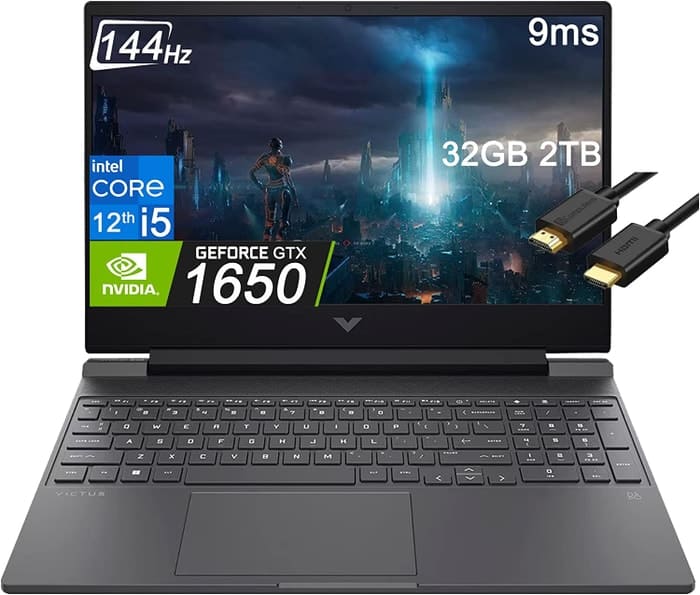
1.HP Victus 15
HP Victus 15: A budget gaming laptop that delivers on performance, but falls short in battery life and design.- Excellent price
- Good gaming performance
- Can double as a work laptop
- Three color choices
- Bad battery life
- Rather plain design
- Weak GPU yields unsatisfactory frame rates
- Screen only so-so despite 144Hz refresh rate
Summary
The HP Victus 15 is a budget gaming laptop that offers good gaming performance at an excellent price. While it may not have the longest battery life or the most stylish design, it's a solid option for those on a budget.
Alternatives
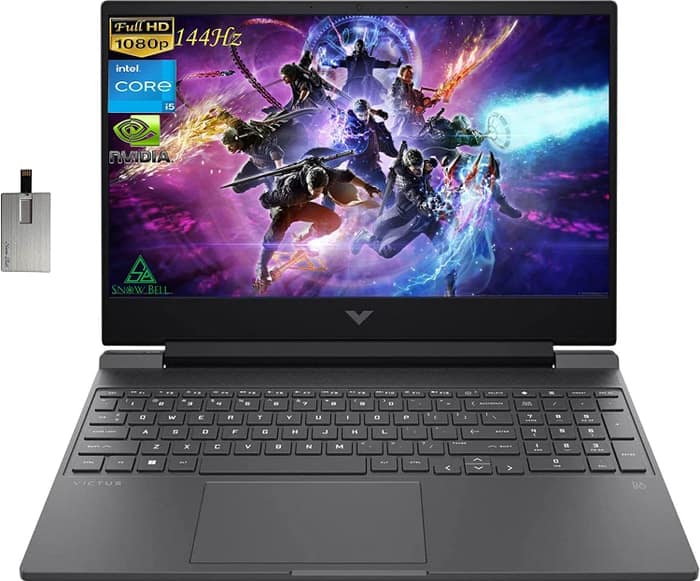
HP Victus
- Delivers smooth gameplay at 1080p.
- Fast SSD.
- No variable refresh rate (VRR) to reduce screen tearing.
- Slow response time on display.

2.ASUS TUF Dash F15
ASUS TUF Dash F15: A powerful and affordable laptop for all-purpose/gaming needs.- Lightweight and well-built
- Good FHD 300Hz and QHD screen options
- Significantly more powerful than the previous generation
- Competitive pricing
- Some quirks affecting everyday ergonomics
- Ports squeezed together on the left edge
- Caution needed with the FHD 144Hz panel option
Summary
The ASUS TUF Dash F15 is a well-built and lightweight laptop that offers good performance and competitive pricing. With its FHD 300Hz and QHD screen options, as well as the significant upgrade in power compared to the previous generation, it is a solid choice for those on a budget. However, be cautious about the FHD 144Hz panel option and some ergonomic quirks.
Reviews
Alternatives

Lenovo Legion 5i Pro 16
- Stylish, sleek form factor
- Gorgeous display
- Webcam quality is poor
- No biometrics

3.ASUS ROG Strix G15
Powerful gaming laptop with a sleek design and impressive performance.- Powerful CPU and GPU performance
- Well-built and sleek design
- Impressive display
- User-friendly maintenance
- Limited connectivity options
- Potential for coil whine in certain situations
Summary
The ASUS ROG Strix G15 is a high-performance gaming laptop featuring an RTX 3000 GPU and Ryzen 5000 CPU. It offers excellent gaming performance, a solid construction, and user-friendly maintenance. However, it lacks in connectivity options and may experience coil whine in certain situations.
Reviews
Alternatives
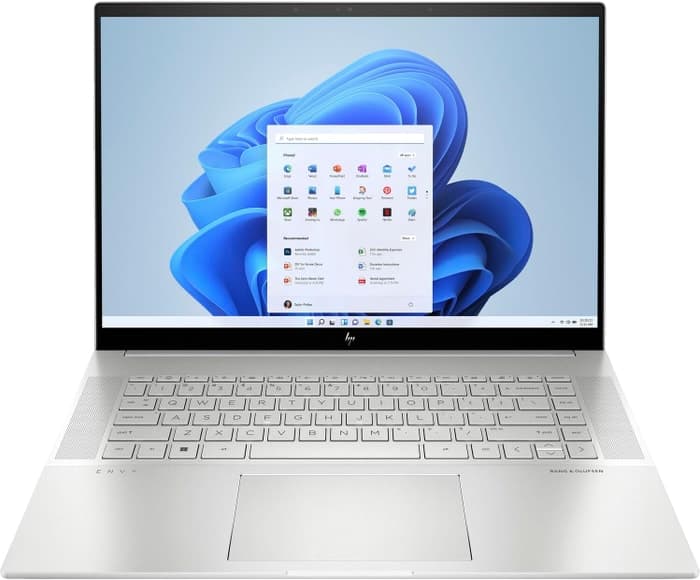
HP Envy 16
- Plenty of CPU and GPU power
- New 120Hz screen refresh rate
- Merely adequate base screen
- Optional OLED has fewer pixels than before
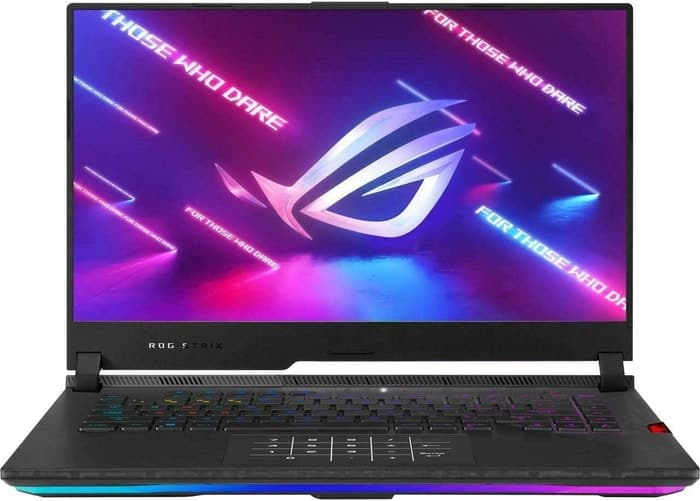
4.ASUS ROG Strix Scar
ASUS ROG Strix Scar delivers powerful performance and excellent display, but falls short on heat and noise management.- Sturdy construction
- Fast Wi-Fi 6E
- Excellent response times and no PWM
- Wide color gamut coverage with Dolby Vision support
- Limited display angle
- No biometric login
- Heavy SSD throttling during continuous reads
- High heat and noise emissions under load
Summary
The ASUS ROG Strix Scar offers impressive performance with its Core i9-12900H and RTX 3070 Ti, along with a fast Wi-Fi 6E and wide color gamut display. However, it suffers from limited display angles, lack of biometric login, heavy SSD throttling, high heat and noise emissions, and subpar battery backup.
Reviews
Alternatives
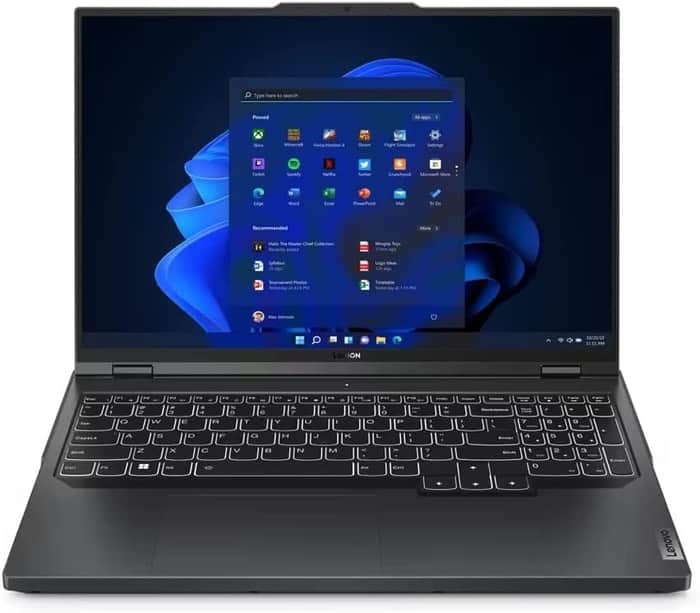
Lenovo Legion Pro 5
- Fantastic value
- Top-tier gaming performance
- Middling screen
- A bit heavy

5.Lenovo Legion Pro 7i 16
Lenovo Legion Pro 7i 16: A mid-priced powerhouse for Affinity Photo 2.- Strong overall performance
- Display is big, bright and fast
- Per-key RGB lighting
- Some flex to keyboard deck
- Poor battery life
Summary
The Lenovo Legion Pro 7i 16 is a mid-priced laptop that packs a punch with its 13th-gen Core i9 CPU and RTX 4090 graphics, making it a great choice for running Affinity Photo 2. Its strong overall performance, big and bright display, and per-key RGB lighting are definite pros. However, there is some flex to the keyboard deck and the battery life is poor.
Alternatives

HP Omen 17
- QHD display with 165 Hz
- Expandable working memory
- Slightly below-average performance for a RTX 4080
- High noise level
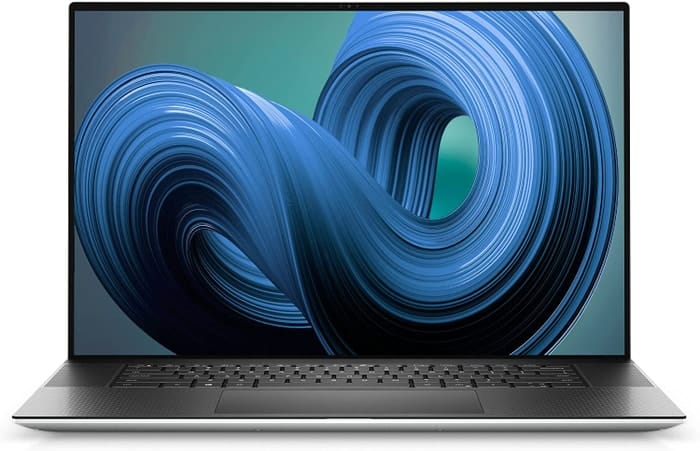
6.Dell XPS 17 9720
Dell XPS 17 9720: Powerful performance and stunning display, but graphics performance and cooling could be improved.- Excellent 4K display with AdobeRGB
- High-quality case
- Thunderbolt 4 PCIe 4.0
- Very high system performance
- Lower graphics performance than the predecessor
- Performance not completely stable under combined load
- Not Wi-Fi 6E compatible
- 720p webcam
Summary
The Dell XPS 17 9720 impresses with its excellent 4K display and high system performance. However, it falls short in graphics performance compared to its predecessor and suffers from slightly weak cooling. Overall, it's a powerful laptop that could benefit from some updates.
Reviews
Alternatives
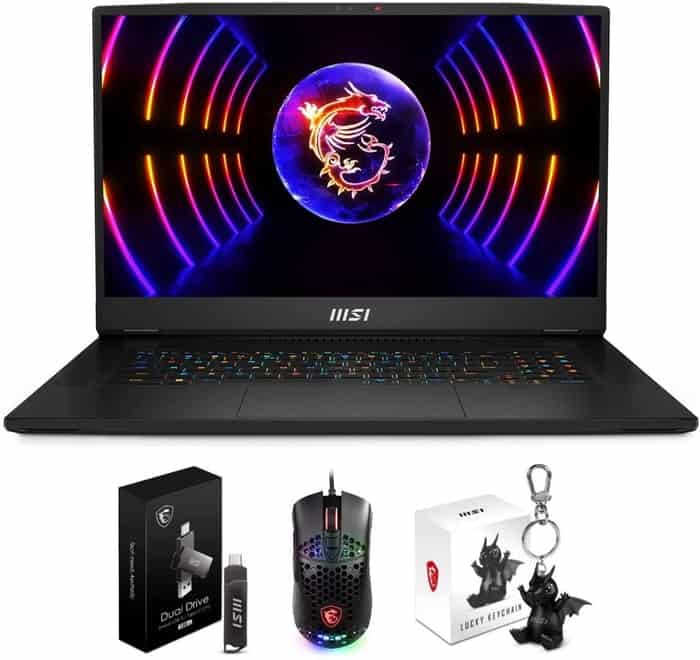
MSI Titan GT77HX 13VH-046US
- Excellent mechanical keyboard
- Class-leading Mini-LED display
- Uninspired design
- Short battery life
Table of the Best Laptops for Affinity Photo 2
| Laptop | Price (approx) |
| HP Victus 15 | $880 |
| ASUS TUF Dash F15 | $1,160 |
| ASUS ROG Strix G15 | $1,750 |
| ASUS ROG Strix Scar | $2,050 |
| Lenovo Legion Pro 7i 16 | $3,390 |
| Dell XPS 17 9720 | $5,600 |

